
What are the paths and cabling methods for 100G network upgrading
With the continuous surge of traffic, major operators and data centers began to upgrade the network architecture economically, smoothly and reliably. At present, there are two 100G migration paths, namely 10G to 40G to 100G and 25G to 100G. Next, ETU-LINK will introduce the wiring schemes of these two paths.
1. 10G wiring
The 10 Gigabit Ethernet technology defined by IEEE 802.3ae-2002 standard is now mature, and 10GB networks can be connected through copper cable or optical fiber. Gigabit bandwidth usually uses CAT5e cable as the transmission medium, while 10G bandwidth requires advanced copper cables, such as cat6/cat6a/cat7 cables. For example, 10G SFP+ port module requires copper twisted pair (cat6a/cat7), but the length of copper cable cannot exceed 30 meters, because the 10 Gigabit port module only supports the transmission distance within 30 meters. In addition, 10G Optical fiber cabling can also be used, such as 10G SFP+ active optical cable or 10Gigabit SFP+ optical module. The following are the relevant parameter options for 10G cabling.
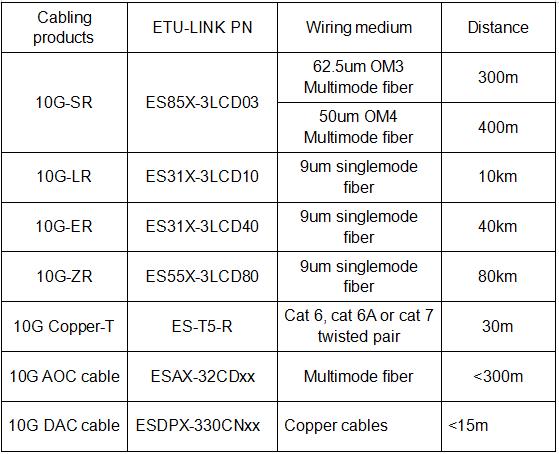
2. 25G wiring
25G single channel rate improves port density and cost requirements. The 25Gbe network can support copper and optical cables, as shown in the following table:
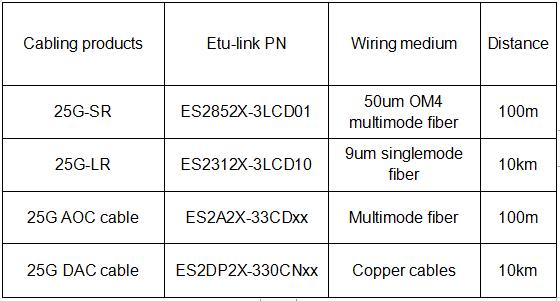
3. 40G wiring
In this path, 10G resources invested in the early stage will be utilized, and the 40G QSFP+ SR4 module is composed of four parallel 10g channels. The longer distance 40G QSFP+ LR4 and 40G QSFP+ ER4 optical modules multiplex four channels with different wavelengths to one optical fiber link for transmission through wavelength division multiplexing (WDM).
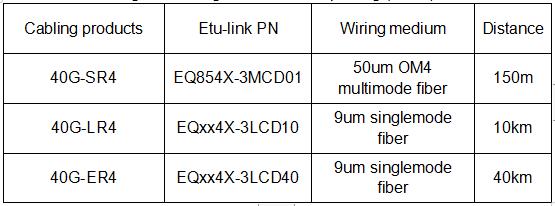
4. 100G wiring
The optical modules used for 100G cabling mainly include 100G-SR4, 100G-lR4 and 100G-ER4, and the packaging form is QSFP28. Among them, 100G-SR4 is a parallel optical module with the interface type of MPO, while 100G-lR4 and 100G-ER4 adopt WDM technology to multiplex four wavelength channels to one optical fiber for transmission, and the interface type is LC.
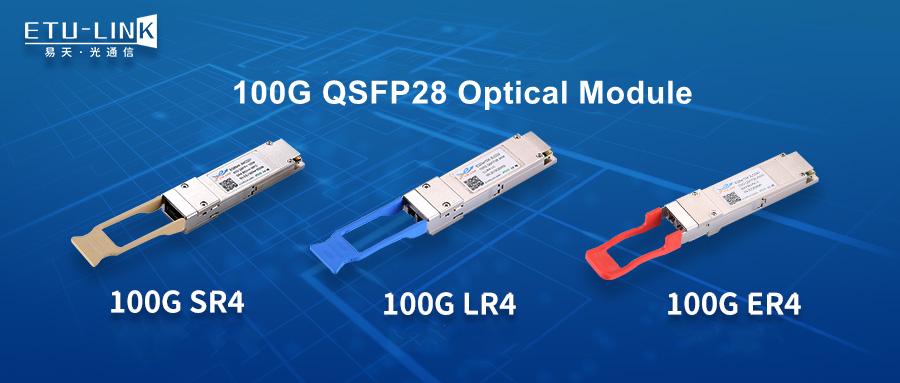
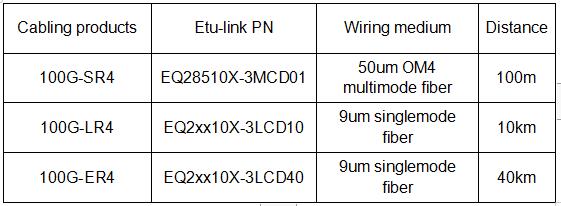
The above are the two 100G network upgrading ways of data center introduced by ETU-LINK. Both of them have their own advantages and disadvantages. In general, 10G → 40G → 100G upgrading way is more suitable for the old data center, while 25G → 100G is more suitable for the construction of new data center.
Categories
New Blog
Tags
© Copyright: 2025 ETU-Link Technology CO ., LTD All Rights Reserved.

IPv6 network supported
Friendly Links:
易天官网